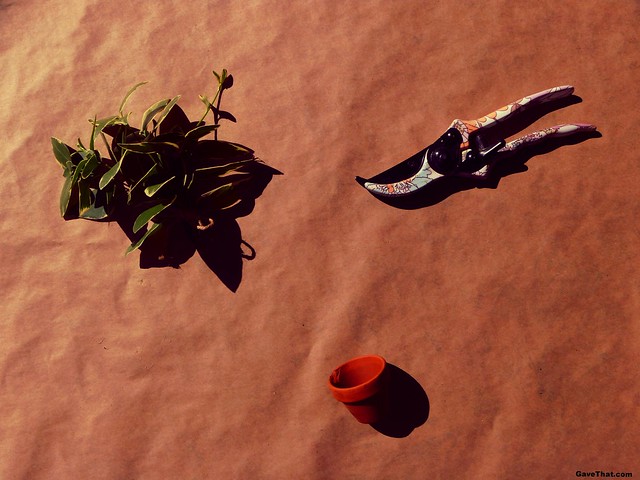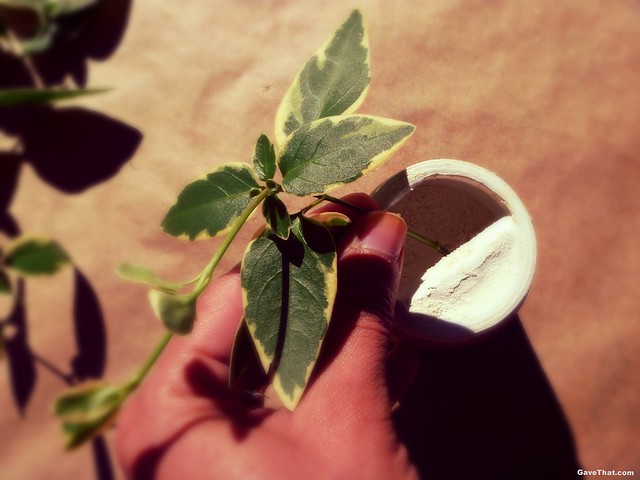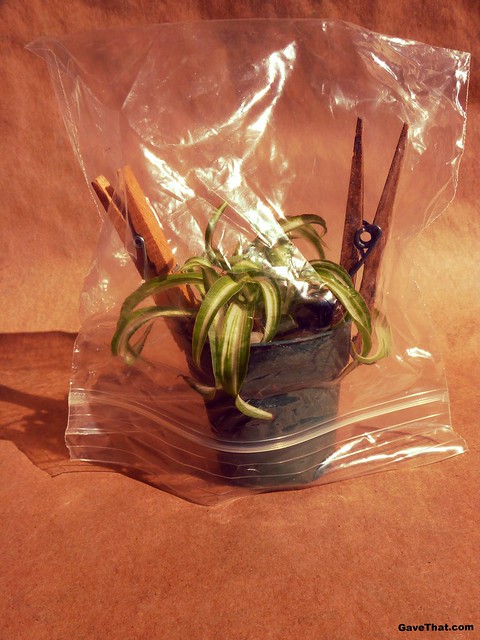
After soaking up the sun this summer (maybe a little too much!) the crispness has finally caught up with us and with it, tons of falling leaves. After cleaning out the beds it dawned on me how many of the plants growing there were actual gifts. A cutting here, a cutting there and in some cases entire plants from clear cross the country. It's actually not too late to still take and give cuttings of your own.
Keep reading for a few trips that have served me well over the years:
THE LIST >
 Back in the day if someone came over and admired your roses it was only polite to offer up a cutting known as a slip. Now many of us give store bought plants which are little more than rooted cuttings. The nice part about going DIY is, unlike this list of plants here, the cuttings you give have a much better chance of actually flourishing in their new home. My Grandmum's hardy Aloe Vera's are a great example. Hot house tropical plants on the other hand can go into shock when moved from their green house environment. The real cause of so many brown thumbs out there. Here's what you'll need to get started:
* Cuttings or pups
* Rooting hormone powder or tea brewed from willow bark
* Potting soil and sand
* Small plastic pots
* Plastic sandwich bags
* Close pins or chop sticks
Growing Tips:
Back in the day if someone came over and admired your roses it was only polite to offer up a cutting known as a slip. Now many of us give store bought plants which are little more than rooted cuttings. The nice part about going DIY is, unlike this list of plants here, the cuttings you give have a much better chance of actually flourishing in their new home. My Grandmum's hardy Aloe Vera's are a great example. Hot house tropical plants on the other hand can go into shock when moved from their green house environment. The real cause of so many brown thumbs out there. Here's what you'll need to get started:
* Cuttings or pups
* Rooting hormone powder or tea brewed from willow bark
* Potting soil and sand
* Small plastic pots
* Plastic sandwich bags
* Close pins or chop sticks
Growing Tips:
- If taking cuttings try to find healthy stems with new growth at the ends.
- Rooting hormone powder is your friend. Remove the lowest set of cut leaves nearest to where the stem is cut and dip in the powder. Of you can water your cuttings once they've been stuck in the soul with the willow bark tea.
- When putting cuttings in a small pot of soil, arrange the cuttings along the inside of the pots wall instead of planting them in the center. The heat and wall itself encourages the roots to grow stronger.
- If you're growing a pup (mini plants that grow next to the large mother) or certain cacti cuttings, let the end dry out a few days before planting in soil.
- For roses, I've had the most success using some rooting hormone and sticking them directly in the ground where the full bush should grow. Then I cut the bottom off a plastic soda container with the cap removed and put it over the cutting. By the next summer a full bush was in bloom.
- Similar to the above, for small cuttings in pots, they can be placed on a cake stand under the dome. You can also use close pins or chop sticks to hold a plastic sandwich bag in place over the plant creating a mini green house. After a week or two this can be removed.
The most important tip is not to try and feed or fertilize your growing plant. Instead gently water and leave it alone for at least 3 months. After that time you can look for new growth (leaves) or tug on it gently to see if it has rooted. Then it can be repotted into a pot a smidgen bigger and watered with a little plant food.
 Some plants are easier to share than others. Here's a list of great ones to start out with:
* Aloe Vera pups
* Chicks from Hens & Chicks (Sempervivum Silverine)
* Periwinkle vines
* Roses
* Spider plant
* Ivy
* Wandering Jew
* Money plant (Crassula ovata)
* Prickly Pear cactus pads
* Lilacs
* Geraniums
* Divided hosta
* Rosary vine (tubers)
* Strawberry runners
* Jade Vine (aka Turtle Ivy)
Are there any plants you love to share?
Image: mam for Gave That
Some plants are easier to share than others. Here's a list of great ones to start out with:
* Aloe Vera pups
* Chicks from Hens & Chicks (Sempervivum Silverine)
* Periwinkle vines
* Roses
* Spider plant
* Ivy
* Wandering Jew
* Money plant (Crassula ovata)
* Prickly Pear cactus pads
* Lilacs
* Geraniums
* Divided hosta
* Rosary vine (tubers)
* Strawberry runners
* Jade Vine (aka Turtle Ivy)
Are there any plants you love to share?
Image: mam for Gave That



